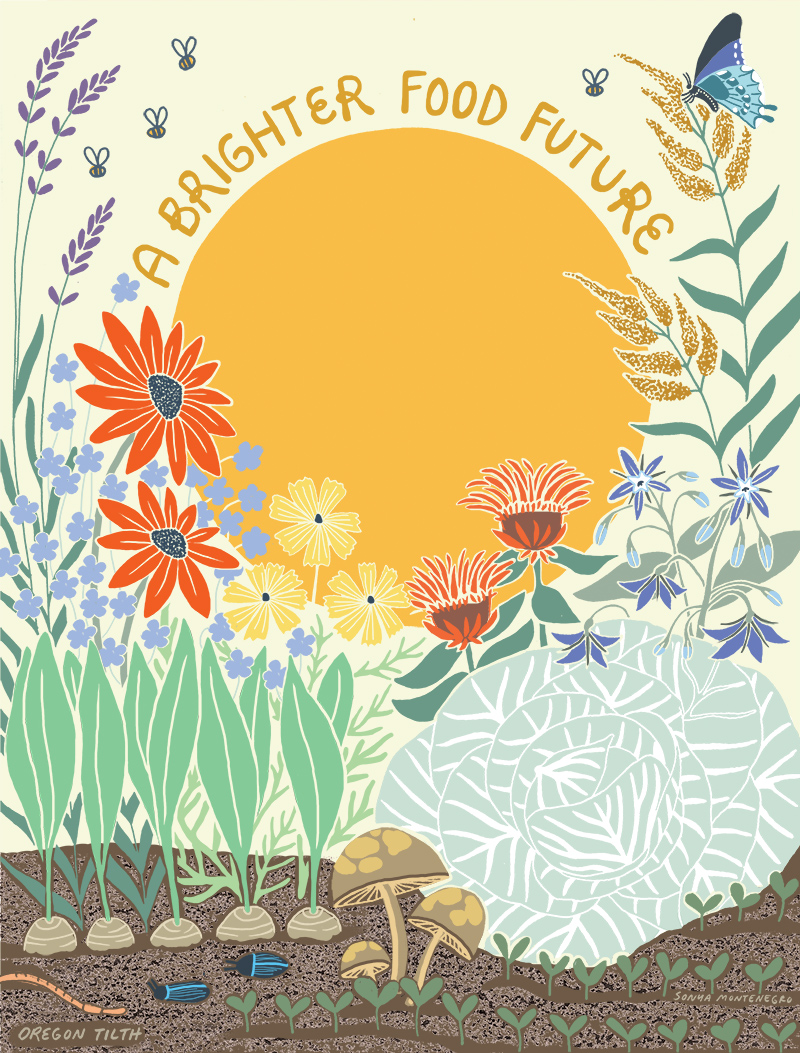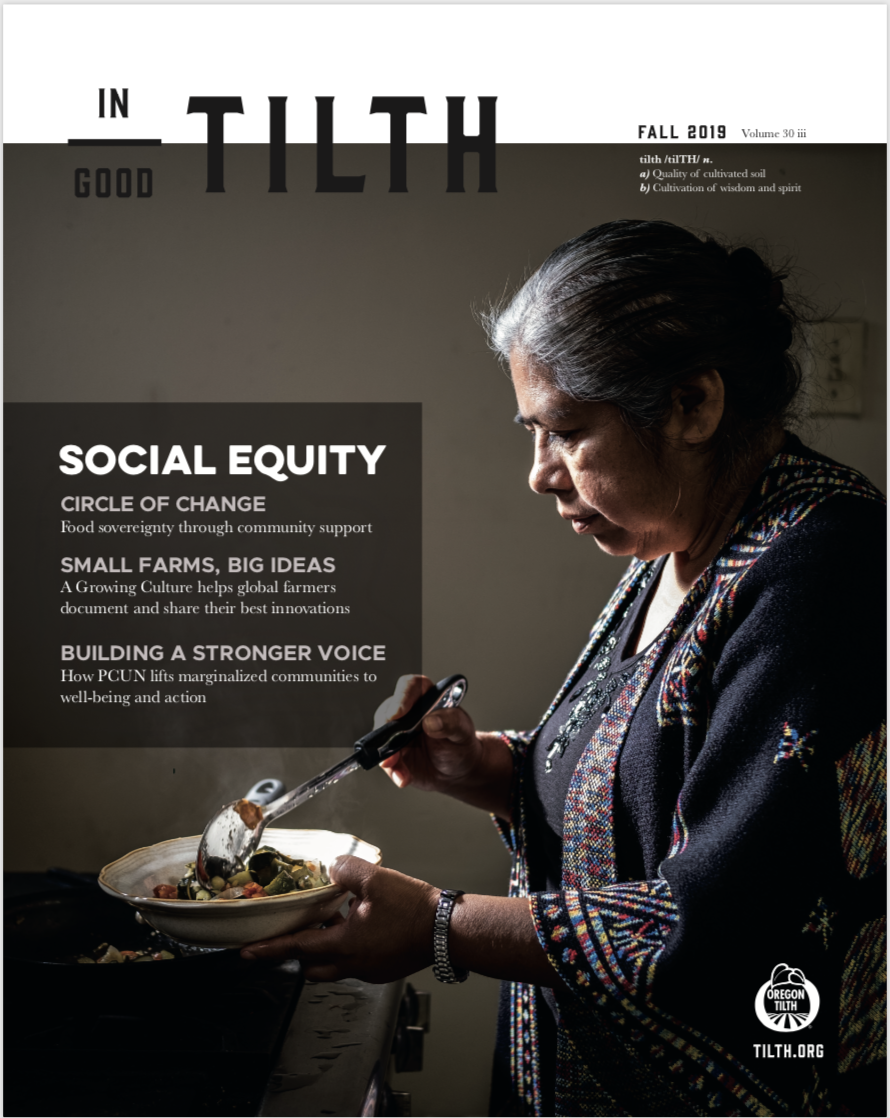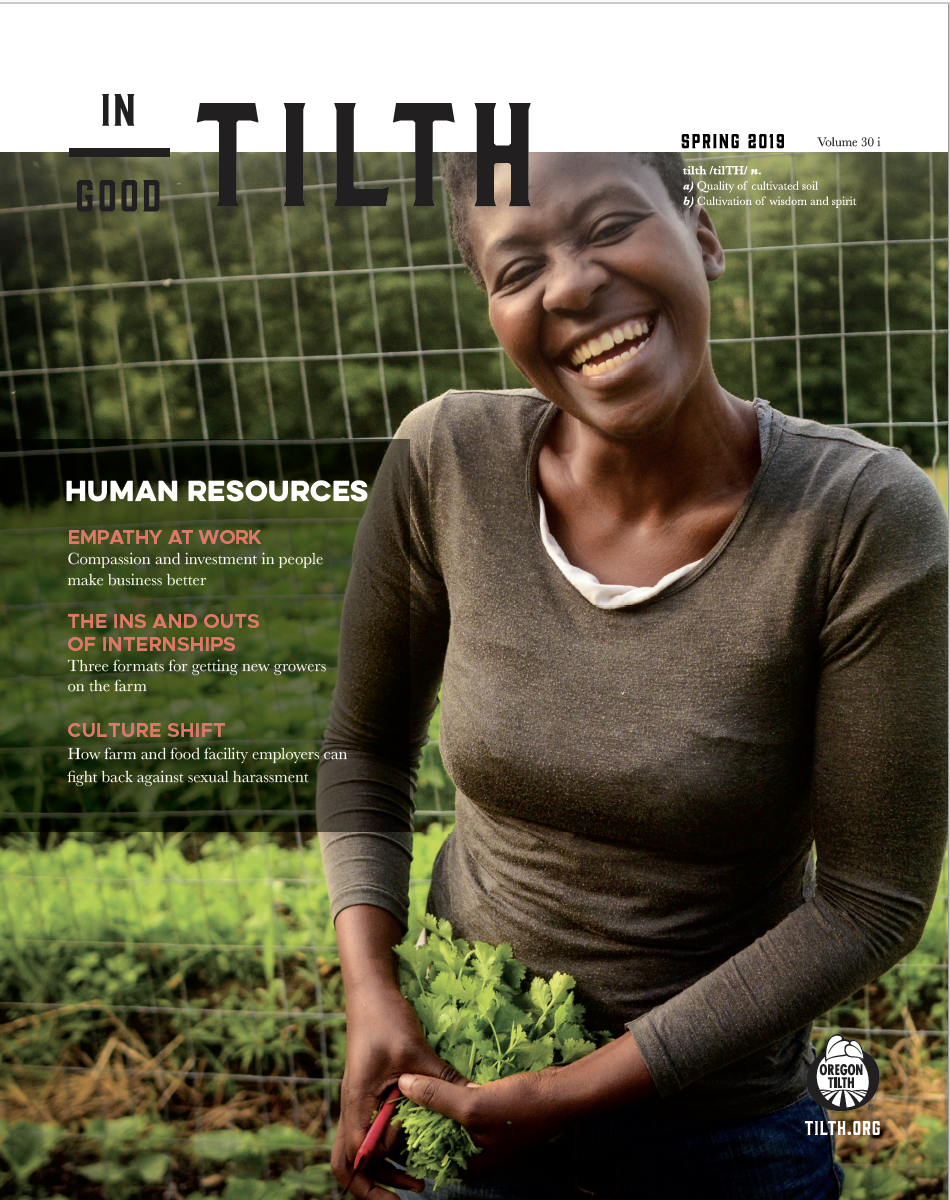Every February about 100 Pacific Northwest vegetable farmers gather at Breitenbush Hot Springs in the Oregon Cascades. It’s like summer camp for farmers — but it’s in winter because everyone knows farmers are too busy otherwise.
The workings are mysterious, with initial emails covering what to bring and not to bring, but absent the usual agenda of keynote speakers, vendor fairs and cover bands. This is the Farmer to Farmer Exchange — an annual gathering and listserv for vegetable farmers in the Pacific Northwest.
Farmer to Farmer Exchange began in 2004, when Suzy and Robelee Evans, after years of attending farming conferences, decided they wanted something different — an event led by and for farmers. After 14 years of organizing the event, the Evanses are now passing the reins to Chris and Shannon Overbaugh, owners of Winter Green Farm in Noti, Oregon.
The Overbaughs started coming to Farmer to Farmer Exchange during the inaugural year, young and seeking information from organic farm elders. Since then, along with stepping into organizing the event, they’ve taken over management of Winter Green Farm from the previous owners. Their awareness of the value of passing knowledge along to the next generation is at the core of the event. In addition to the chance to learn from their elders, Shannon Overbaugh values the community the event has given her. “[It’s been an opportunity] to meet farmers. Young farmers when we were young farmers, and to grow up with them. Growing in a community with them and sharing knowledge has been wonderful.”‘

While not every state or region has the capacity to gather at an off-the-grid, clothing-optional hot springs resort, the core values that make Farmer to Farmer Exchange such an effective event can be replicated in field days, conferences and workshops anywhere. Here are three main components of the conference:
Peer to peer learning
Farming as a profession does not lend itself to frequent gatherings of farmers outside a market environment, so a chance to share information among themselves is priceless. A 2015 study of organic farmers in North Carolina found that they placed the most value on an interactive exchange of information, with networking as the most appreciated source of information.
“You know, our customer base is sympathetic, but when you get in a room full of farmers, you can really share your ideas and thoughts and feelings of how things went good and how things went bad,” said Chris Overbaugh. “So it’s special.” One of the event’s signature moments is the “Ah-ha’s and Uh-ohs” on the first morning of the conference. The group sits in one large circle and each person shares their name, their farm and something they learned that went well or didn’t with the group. The Overbaughs see this as the cornerstone of the event, “because we all learn from that.”
Occasionally, someone needs to direct the group to move on when people get too involved in one ah-ha — fishing line on poles to deter geese issues, for example. Otherwise, there is no single speaker. The hard-won experience from the past season is the main event.
Vulnerability in the learning environment
Another key aspect to Farmer to Farmer Exchange is sharing stories of failure and success. Discussing failure is especially valuable, because not only can someone who’s failed poll their peers for potential solutions, but everyone learns from those mistakes.
And that vulnerability of exposing failure builds a stronger community. “We can all commiserate with each other,” said Shannon Overbaugh. “It’s a learning experience, and sharing the knowledge and being open with each other [is valuable].”
While sharing experiences of failure may not come naturally, warming up with the “Ah-ha’s and Uh-oh’s” creates a safe and equitable space for information sharing and learning.
Stakeholder-led event
At Farmer to Farmer Exchange, the participants, not the organizers, determine the agenda. The process of choosing topics each year is democratic and consequently messy. There are no keynote speakers. The final event of the conference is to choose sessions and facilitators for the next year. Breakout sessions for 2018 included “Scale Appropriate Equipment,” “Specialty Greens,” “Surpluses and Wastes” and “Working with Restaurants,” among others. Each session has one or two informed facilitators, but instead of a lecture it is a collective discussion that includes problem-solving and information sharing.
Choosing the topics requires collaboration and flexibility, with Robelee Evans leading the charge to get some sort of consensus. But the payoff is worth the trouble. By working together, the farmers become actively engaged in the outcome of next year’s event.
The piece of Farmer to Farmer Exchange that brings everything together is the sense of community cultivated at the event. This openness allows the rest of the event to flow — because a peer-to-peer event will succeed only if people share their knowledge. The event continues beyond Breitenbush through a listserv attendees may join after their first conference. The listserv allows knowledge sharing to continue beyond the event, with farmers able to poll their peers about anything from pest control options to market success with certain vegetable varieties and more.



















